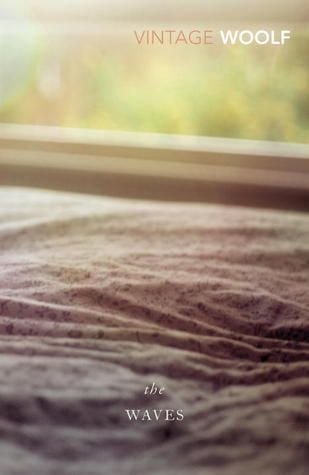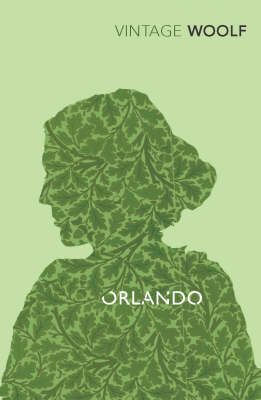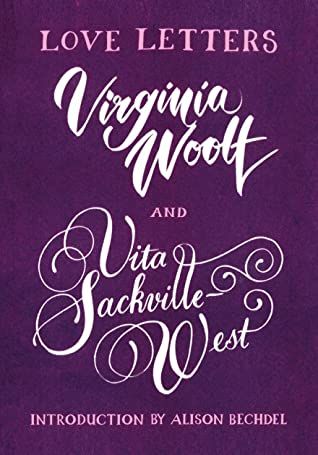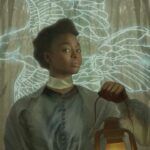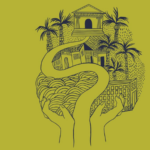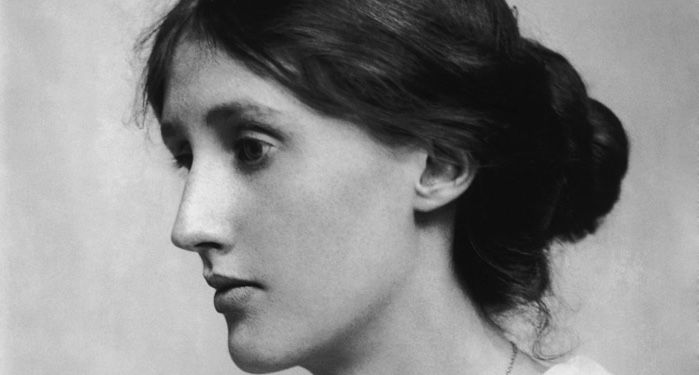
Who Was Virginia Woolf?
In 2017, I picked up A Writer’s Diary from a small bookstore in London called Persephone Books (now located in Bath). I had no idea at the time what an impact it would have on me. I had read some Virginia Woolf, after all, and knew I enjoyed her work. But when I dug into her journals, Virginia as a woman blossomed into life. She was witty, judgmental, passionate, hard-working. Her illness took a wide desperate toll on her. Her work gave her life. Her friends were wild and their connections webbed. From there, I would start working my way systematically through her novels and journals.
Now, Woolf follows me around. I hear her words every time I see waves crashing on a shore, or light coming dappled through the leaves. I embroidered a piece that reads, “and in me too the wave rises,” a phrase from The Waves. Reading her journals, you can watch her discover her voice and rhythm. They’ve made her real, hovering beside me, sometimes guiding my own thoughts and wonderings.
The joy of it is discovering more of who Woolf was as a true person, rather than a simple “tortured writer” archetype that people often reduced her to. So, who is Virginia Woolf? Here, I’ll write about what I’ve learned about her as a woman, a writer, a person. The things that surprised me, and the themes that ran through her life, from her craft to her friendship, her marriage to her queerness, her insecurities to her death.
(Content warnings ahead for discussions of suicide, depression and anxiety, sexual assault.)
Her Craft, and How She Found Her Voice
Before anything else, to know Virginia, you have to look at her work. That’s not just me speaking: you can ask her. She felt like herself when she was working. She would repeat to herself, and often advise others, that working was the point, the thing that would carry you through a life.
She writes in her journals of “taking my fences” — of her determination to always strive, push, work; she takes this as the meaning of her life, and pushes others to take risks to pursue work and happiness, which she thought were inextricably connected. “My mind turned by anxiety, or other cause, from its scrutiny of blank paper,” she said in December 1919, “is like a lost child — wandering the house, sitting on the bottom step to cry.”
Virginia decided to be a writer when she was still a child; her sister Vanessa decided to be an artist. As she grew up, she first began reviewing, and then writing her novels, the first of which was The Voyage Out in 1915. The late 1910s were crucial years. The Hogarth Press, which she ran with husband Leonard Woolf, began to take off; she began writing constantly, and she began journaling faithfully in 1917.
The 1920s were her most prolific era, as they included Mrs Dalloway, To The Lighthouse, Orlando, and A Room of One’s Own, but the 1930s and early ’40s would publish some of what she most loved, including The Waves, The Years, and Between the Acts.
She was charged by critique of her novels — while building to the publication of one of her books, she would feel a nervous anxiety, only to pivot once they were published. As soon as critics actually started speaking, Virginia would be reminded that she wrote only for herself, like a mini rebirth each time.
For much of her career, Woolf felt she was moving toward one goal in her writing: a slow movement in fiction. She felt that this began with short story “Kew Gardens” in 1919. When she wrote Jacob’s Room, she said, “There’s no doubt in my mind that I have found out how to begin (at 40) to say something in my own voice; and that interests me so that I feel I can go ahead without praise.” The style was further developed in Mrs. Dalloway and To the Lighthouse.
“The idea has come to me,” she wrote on November 28, “that what I want now to do is saturate every atom. I mean to eliminate all waste, deadness, superfluity: to give the moment whole, whatever it includes.” To Virginia, depicting reality meant getting as close to the true experience of the human soul as she could — including thought, sensation, and the natural world around the person, cutting any “deadness” that comes from the inclusion of things that “don’t belong to the moment.” “Why admit anything that is not poetry — by which I mean saturated?” It was her classic style, a sort of steam-of-consciousness, giving her characters a tunneling depth, including fleeting images and blurring of minds, trying to capture a moment as it’s experienced — a swirl of images and sensations and thoughts.
She felt she finally found her voice, finally tackled this goal, in The Waves. In February 1931, she wrote that she has “netted that fin in the waste of water which appeared to me over the marshes out of my window at Rodmell when I was coming to an end of To the Lighthouse.” She felt that she had finally captured the freedom and boldness of her mind. “I think I am about to embody at last the exact shapes my brain holds,” she wrote, “What a long toil to reach this beginning — if The Waves is my first work in my own style!” This epic, swirling book — my favorite of hers — was her first in which she felt she’d achieved what she’d been working towards.
Her Wild Group of Friends
The famous Bloomsbury set of London was a group of people who were intelligent and lively, most of them connected to the literary or art worlds. They shared a certain lack of respect for tradition and customs, for “traditional” morals, and a distrust of popular enthusiasm and opinion.
But what actually held this group together was a core group of friends. Virginia and Vanessa’s brother, Thoby Stephen, went to Cambridge with Lytton Strachey, Saxon Sydney-Turner, Clive Bell, and Leonard Woolf. Clive would marry Vanessa; Lytton would propose to Virginia but they wouldn’t be married and instead would stay close, inseparable friends for the rest of their lives. Saxon could be boring, Clive could frustrate Virginia to no end, there was back-stabbing and gossip, jealousy and desire, but the friendships persisted, and around them grew the clique that would be Bloomsbury, which would include figures such as T.S. Eliot and E.M. Forster coming in and out.
Virginia relates a fair amount of that gossip in her journals. Reportedly, she was a gossip herself in a way that sometimes got her in trouble with friends when she passed on rumors or stories to someone she wasn’t supposed to. In her journals, she uses ruthless snark, and her sometimes snobbery and keen observational eye makes her stories about her friend group funny, dry, and witty — her backhanded compliments and savage insults can be quite fun to read.
And to be fair, there was a lot of gossip to be had. Her friends got tangled in love triangles. In her first journal, Virginia recounts how Saxon Sydney-Turner committed to Barbara, while allowing that she would also be staying with Nick; their polyamorous relationship could get complicated but enjoyed some stability for quite a while. Roger Fry, an art critic and painter, would fall in love with Vanessa, a love that was mutual but later melted into lifelong friendship. Duncan Grant, a bisexual painter, was Vanessa’s lifelong partner despite her marriage to Clive Bell; Clive in turn had many lovers, including Mary Hutchinson; both knew of the others’ partners and mostly didn’t care. Lytton Strachey had a romantic but not-sexual relationship with Dora Carrington, who would marry Ralph Partridge, who Lytton appreciated and had a sexual relationship with.
When Vanessa gave birth to a daughter named Angelica, a girl who was Duncan’s daughter but accepted by Clive Bell as his own, Duncan’s lover David Garnett (“Bunny”) declared that when Angelica was 20, he would be 46, and, “I think of marrying it…will it be scandalous?” To the horror of her parents, in 1942, David did marry Angelica, who didn’t find out until later that he had been her biological father’s lover at the time of her birth.
All of these are just examples, mind you. The point is, that Virginia’s friends were queer, dramatic, and had open relationships, queer entanglements, emotional break-ups, and lived in a web of drama, snubs, and critique. Attachments were often taken as matter-of-fact, and they were not, for the most part, concerned about keeping marriage monogamous.
Her Happy Marriage — and its Difficulties
Virginia and Leonard would marry on August 10, 1912, after she spent several months doubting whether she should accept. They had been living more or less together with some other members of the Bloomsbury set before that. He was a writer and social reformer.
Lytton Strachey had actually encouraged Leonard to propose to her immediately after his own proposal fell through. Leonard proposed several times before she said yes. She was worried about the way marriage seemed to limit women in society.
In addition, she was averse to sex with men due to being molested as a child by two of her half-brothers, trauma which is documented in her 1939 memoirs. She would speak out as well about how child abuse often takes place within families, a controversial thing to state in 1920. While the amount of influence this had on Virginia’s sex life has been debated, her experience as a survivor of this abuse is likely part of what made her dislike the idea of having sex with men.
She told Leonard point-blank in a letter that she had no physical attraction to him whatsoever. But at the same time, she did love him, and he made her happy. So in the end, she said yes.
There would be difficulties, certainly. She attempted suicide with a large dose of verona a year after their marriage, and doctors informed her that it would be a bad idea to have children due to her mental illness. Despite her aversion to sex with men, the realization she couldn’t have children was still a tough one for her to take. She accepted it, but it would tug at her now and then throughout her life.
Those were the difficulties. But it would be a mistake to assume that the lack of sex meant lack of love. Their marriage, a partnership of minds, would prove to be extremely strong. He was her editor, sounding board, and stability. She trusted him to be the first reader of all of his novels, and treasured his opinion. He was her grounded center at the core of a world that was often chaotic, often at war, and in which her mental illness could often rise; he encouraged her rest and peace, sometimes to her frustration. He was incredibly nurturing.
They were business partners, as well — in 1915, they moved to Hogarth House, and began to publish under the Hogarth Press. It began as a sort of hobby, but would become a serious business, to the point where Virginia relinquished her interest in the business in 1938 to focus on writing, leaving its running to Leonard Woolf and John Lehmann.
The press that began as a literal handpress set up in their dining room would go on to publish 527 titles between 1917 and 1946, including works such as Woolf’s own novels, The Waste Land by T.S. Eliot, and work by Katherine Mansfield, Vita Sackville-West, E.M. Forster, Clive Bell, and Roger Fry. They also published 29 translations, particularly from Russian and including work by Dostoyevsky, and the first translation of the complete works of Sigmund Freud. (The Hogarth Press was relaunched in 2011 and prints today under Penguin UK and Random House in the States.)
Virginia and Leonard lived in a few homes, all beloved, but none so much as Monk’s House in Rodmell, Sussex. Their time there each year replenished Virginia’s soul, and allowed them to escape to peace. She would write there. They would read. They would garden, and she would bake crusty loaves of bread. She loved the social hub of London, but Monk’s House was their refuge. Much like that house, Leonard Woolf was a source of companionship and constancy for Virginia that was invaluable. In her final note to Leonard before her death, Woolf would write: “I don’t think two people could have been happier than we have been.”
Queerness, Lovers, and Most of All — Vita
While her marriage was very happy, the Bloomsbury set was not known for monogamy. Virginia engaged in several flirtations, if not more, with men and women. Reading her journals as a pansexual woman, it seems to me as though crushes pop out from the page, as do more direct moments, such as when Mary Hutchinson kisses her on the stairs and “purrs in her ear”; Woolf had flirtations with Sibyl Colefax and Lady Ottoline Morrell, some of the young women who worked at Hogarth Press, as well as young men including Raymond Mortimer, Ralph Partridge, Stephen Spender, and others.
Many of the Bloomsbury set were queer. Homosexuality was a criminal offense at the time. In 1921, lawmakers voted to criminalize “sexual acts of gross indecency” between women, but it didn’t pass (lawmakers worried it would encourage women to explore it). Nevertheless, many of her friends were open about their sexuality, at least in their group. And while attempts to decide “how queer” Virginia Woolf is are largely impossible due to the kind of evidence we have and the fact that our labels weren’t present in her circle, it seems clear that at the very least, she was attracted to women in some fashion.
So it can be funny to see resistance to interpreting Virginia Woolf’s novels as being queer, when in fact so many of her friends and family were openly queer. There are women in her novels who light up at the thought of other women, men who can think of no one but their former classmate. Queer love snakes through her novels, gentle and true.
Orlando is famously queer. It was a “joke” or satire, an attack on the traditional idea that gender is ingrained or biological. Virginia showed Orlando, using he/him pronouns for him as a young boy, become something in between, using they/them, and then “becoming” a woman, using she/her pronouns. It is a perhaps magical transformation, as Orlando later becomes a biological mother; but it no less wondrous or radical for it. Virginia shows that after just a day of being a person in a woman’s body, out in the world, Orlando has been so influenced by gender norms that her behavior and way of moving in the world have completely shifted.
But, and this is important, when Orlando arrives at the home where she grew up, all of the staff recognize her immediately. She is, without question, the same person. It is sometimes considered the first novel about a trans person, and I remember the way my fellow students in college were animated about the way it discussed pronouns and gender.
In 1927, Virginia wrote that Orlando was “based on Vita.” Vita Sackville-West was a bisexual woman who among other things, had once dressed as a man to run away with her lover; some today suggest that she was also genderfluid. Orlando was a love letter to Vita in so many ways. Virginia actually wrote to Vita and asked her permission because of the nature of the work, and Vita replied, “My God Virginia, if ever I was thrilled and terrified it is at the prospect of being project into the shape of Orlando.” (Reception to the novel was mixed — Vita’s mother, for example, was horrified.)
Vita was perhaps Virginia’s most famous attachment, and her strongest. Vita was ten years younger than Woolf. She was frustrated from a young age that she couldn’t inherit Knole, her ancestral seat, because of her gender. Aristocratic, she was somewhat apart from Woolf’s usual Bloomsbury company. She was married to diplomat Harold Nicholson, who also had same-sex affairs throughout their marriage. Vita caused scandal upon scandal when she ran off to Europe with lover Violet Trefusis in 1917, and then a few more times after that.
She met Virginia in 1922, and they grew steadily closer. Vita was attracted to Virginia’s intelligence and charm. Vita made Virginia feel appreciated, adored, and Vita celebrated women, igniting a feminist thrust to Virginia’s work that she had already been called to. Leonard didn’t object to their relationship, and it grew slowly but steadily. Virginia wasn’t sure right off the bat what to make of this “Sapphist” who “may have an eye on me, old though I am.”
But their letters, their writings, show dear love. Early on, Vita writes to her husband, “Darling, I have quite lost my heart.” Virginia writes to her, “Yes yes yes I do like you. I am afraid to write the stronger word.” In her journal: “Am I in love with her? But what is love?” Vita in 1925 wrote her husband, “I have gone to bed with her.” She wrote him at another point saying that being exposed to Virginia’s wit is like having her head held to a grindstone — she said this in a tone of delight. In 1926, Vita writes to Virginia, “I am reduced to a thing that wants Virginia. You have broken down my defenses.”
The two women admired and respected one another tremendously. Woolf was envious and in love with Vita’s confidence, presence, being; Vita with Woolf’s writing, her genius, her wit. Vita published her books with Hogarth, and at the time they were more popular than Virginia’s: these included The Edwardians and All Passion Spent, both tremendous bestsellers. And there was, of course, Orlando. They supported each other’s work, and Vita helped Virginia manage her illness in new ways.
They would later draw apart. Vita had had other lovers while with Virginia, but around 1927 or so, their relationship started becoming more and more about longing. They stopped being together in 1929, though they would stay good friends and visited each other often.
In 1940, in one of my favorite and saddest letters of Virginia’s written to Vita, she wrote: “It’s perfectly peaceful here — they’re playing bowls — I’d just put flowers in your room. And there you sit with the bombs falling around you. What can one say — except that I love you and I’ve got to live through this strange quiet evening thinking of you sitting alone.” And six days before she died, Woolf would write her: “You have given me such happiness.”
A Death That Should Not Define Her
It is well known that on March 28, 1941, Virginia Woolf filled her coat pockets with stones and walked into the River Ouse. Her body was found on April 18. She had left a note addressed to Leonard. She was buried in the garden of Monk’s House.
Death is tragic, and certainly death by suicide is. But I have often found that Woolf’s death is mythologized to the point of being too much the focus of her story.
Yes, she struggled with depression and anxiety all her life. Some have suggested that her experience of being molested as a child is tangled in her illness. She suffered “headaches,” intense attacks that would take her out completely, send her into collapse. Her journal has many such gaps. She attempted suicide more than once. Her first breakdown had been after her mother’s death, and early deaths continued to haunt her throughout her life.
Her death followed a painful decade that began with the deaths of Lytton Strachey and Roger Fry. After finishing The Years in 1936, she had collapsed. In 1937, Vanessa’s oldest son died at age 29. Virginia found herself unable to work after she finished Between the Acts. As a pacifist, the onset of World War II hit her hard, and then the Blitz destroyed their London home and her sister’s studio. Her biography of friend Roger Fry was received coolly. Her mental health began to suffer.
People can certainly point out the references to death and suicide in her books. They are there: she often struggled. In May 1932, she wrote: “What a terrific capacity I possess for feeling with intensity — now, since we came back, I’m screwed up into a ball; can’t get into step; can’t make things dance; feel awfully detached; see youth; feel old; no, that’s not quite fit: wonder how a year or so perhaps is to be endured. Think, yet people do live…And my eyes hurt: and my hand trembles.”
But her death is so mythologized that I often see her reduced to a “troubled writer” stereotype. She was so much more — what if we looked at different passages?
In January 1932, Virginia wrote that she wanted to write four more novels, and said: “Can we count on another 20 years?…sometimes feel that I have lived 250 years already, and sometimes that I am still the youngest person in the omnibus.” In January 1932, she wrote: “This trough of despair shall not, I swear, engulf me.”
On October 11, 1929, she wrote: “Here is something to fight; and when I wake early I say to myself Fight, fight. If I could catch the feeling, I would; the feeling of the singing of the real world, as one is driven by loneliness and silence from the habitable world; the sense that comes to me of being bound on an adventure…And this curious steed, life, is genuine.”
I mentioned earlier that The Waves is the novel in which Virginia finally felt she’d arrived at her style, at what lived in her mind. In that spectacular novel, there are many references to despair, and a quiet hint at a suicide. But there is also its most iconic quote, with which the book comes to an end.
“And in me too the wave rises. It swells; it arches its back. I am aware once more of a new desire, something rising beneath me like the proud horse whose rider first spurs and then pulls him back. What enemy do we now perceive advancing against us, you whom I ride now, as we stand pawing this stretch of pavement? It is death. Death is the enemy. It is death against whom I ride…Against you I will fling myself, unvanquished and unyielding, O Death!”
Despite all the odds and despite her illness, Virginia Woolf lived 59 years. She lived and loved for 59 years, pushing and breaking against a shore, insistent on somehow living. Instead of thinking of her as this strange, suicidal woman, think of her this way: as a woman fighting, a woman who constantly pushed back against death, fighting it, holding an insistent, firm nugget of hope in her hands in the form of a pen.
To Find Out More
For more on Virginia Woolf, and her life, check out Virginia Woolf by Hermione Lee; and Virginia Woolf and Vita-Sackville West: Love Letters with an introduction by Alison Bechdel. And of course, there are her own writings. If you don’t have the time or patience to read her journals from first to last, check out A Writer’s Diary, edited by Leonard Woolf to highlight the excerpts that hit on her writing and reading, and read Moments of Being, a collection of posthumously-published autobiographical essays by Woolf. To get into her novels, check out our guide to where to begin. Finally, for something a bit special, I recently discovered that at Harvard Library’s website, you can see pages from Virginia Woolf’s own personal photo album.



